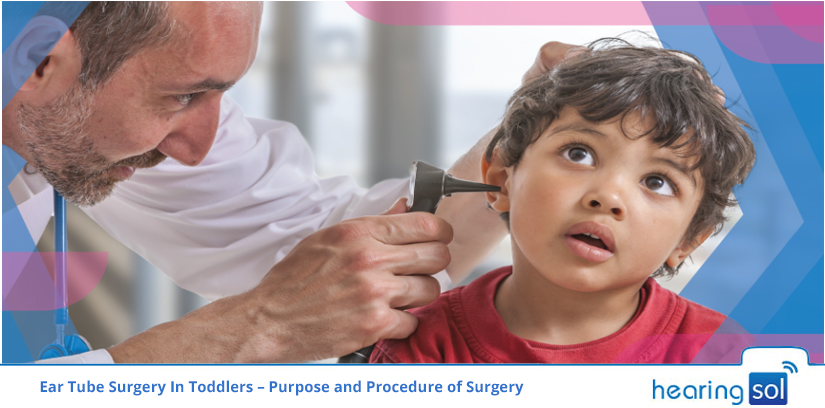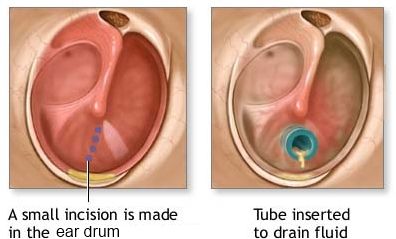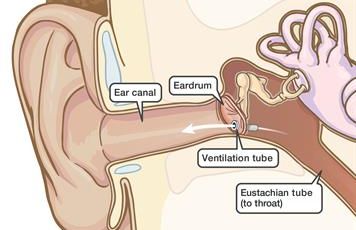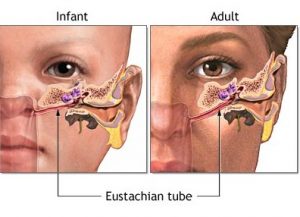
Sometimes, problems may occur in the ear and there are very few options that can be regarded as the best solution in order to overcome such problems.
And the most common problem is Ear infection that every individual has to face at least once in their lifetime.
In children, this ear infection causes some drainage in the ear and when this drained fluid is collected in the middle ear, it causes pain, infection, and other problems.
You can purchase the latest hearing aids at a fair price through HearingSol, If you need any assistance or you have a query regarding Ear Tube Surgery In Toddlers and Hearing Loss, feel free to call us at +91-9327901950. We are always here to help you.
To get rid of this fluid, we need Ear tubes through surgery. In this article, we are going to discuss what are ear tubes, their purpose, procedure, benefits, risks, and all related facts.
The Purpose And Procedure Of Ear Tube Surgery
What Is Ear Tube?
Ear tubes are often used in the treatment of problems in the ear, which is carried out especially in children.
In medical terminology, ear tubes are generally called ‘Tympanostomy tubes’, or Ventilation tubes, Pressure equalization tubes.
These tubes are usually tiny in size, have hollow cylinders, are made of either plastic or metal, and are inserted into the eardrum via surgery.
Purpose Of Ear Tube Surgery
An ear tube creates a passage for fluid that collects in the middle ear and also for air that ventilates the middle ear and prevents the accumulation of ear wax and fluids behind the eardrum.

Ear tubes are often recommended for children who have a middle ear infection (Otitis Media) or persistent fluid build-up behind the eardrum, especially if the condition causes loss of hearing and affects speech development.
Most ear tubes fall out within six to nine months and the holes shut on their own. However, in certain cases, some tubes need to be removed and some holes may require to be closed through surgery.
Ear tubes are widely used in-ear treatment as these often provide long-term drainage and ventilation to the middle ear that has had persistent fluid build-up, sometimes may also include chronic middle ear infections or frequent infections.
If you want prevention from any disease, you must know its Symptoms and its Causes.
Let us discuss some symptoms and causes of this infection:
Symptoms and Causes of Infection
The most common symptoms and causes of middle ear infection (otitis media) in children include:
Symptoms
- Earache
- Irritation in the ear
- Drainage of fluid from the ear
- Rubbing or pulling the ears because of ear pain
- Fever
- Problems in sleeping pattern
- Trouble in hearing or responding to sounds
- Crying more than usual
- Acting more irritable than usual
- Loss of balance
- Loss of appetite
Causes
- Swelling or inflammation in Eustachian tube
- Collection of fluids in the middle ear
- A bacterial or viral infection
- Enlargement of Adenoids
- Dysfunction of Eustachian tubes
- Perforation of the Eardrum
If your child has an infection in the ear and if it is not treatable with antibiotics than your doctor might suggest you Ear Tube Surgery. Now let’s discuss how this surgery is performed
The procedure of Ear Tube Surgery
If your child has a periodic middle ear infection, your doctor might suggest a procedure to drain fluid from the middle ear. This procedure of draining fluid from a tube is called Ear Tube Surgery.
While performing an outpatient surgical procedure called a Myringotomy, the surgeon creates a small hole in the eardrum that enables him/her to suction fluids out of the middle ear.
A Tympanostomy tube which is a size of a rice grain is placed in the opening to help in ventilating the middle ear and prevent the collection of more fluids.
Some tubes are supposed to stay in place for six months to 1 year and after that, fall out on their own. And some tubes are designed to stay in longer and need to be surgically removed.
This ventilation process includes two types of treatment which are Ventilation with ear tubes and Normal ear ventilation.
The difference between these two methods are mentioned below:
A) Ventilation With Ear Tubes
In medical treatment, tympanostomy tubes or ear tubes provide an alternate air passage to keep the air refreshed in the middle portion of the ear, allowing for normal drainage and equalizing the air pressure inside the ear.

These tubes are most often used in children who have one of the following conditions:
1. Fluid Trapped Behind The Eardrum
This results in inflammation and fluid build-up in the middle ear without bacterial or viral infections. This may occur because the fluid build-up persists even after an ear infection has been healed.
It may also occur because of some dysfunction of the Eustachian tubes.
2. Hearing Loss
Hearing loss often results from otitis media (or middle ear) with effusion. This can sometimes lead to personality disorders which commonly include delays in speech development, communication problems, behavior problems, and poor performance at school.
3. Middle Ear Infections (Otitis Media)
Infections in the middle ear are generally considered to be quite frequent in nature, especially if there are three or more distinct episodes within a period of six months or four or more episodes in a period of a year.
In such a situation, ear tubes may help prevent recurring infections in the middle ear.
4. Chronic Middle Ear Infections
This is basically a long-term infection in the middle ear, which does not improve even upon using the antibiotic treatment.
5. Chronic Suppurated Otitis Media
This is a persistent ear infection in the middle ear that often results in generating a pus-like fluid discharge and/or perforation of the eardrum.
B) Normal Ear Ventilation

The procedure of ear ventilation of the middle ear is naturally accomplished by the Eustachian tubes, which are a pair of narrow tubes that run from each middle ear to high in the back of the throat. The tube at the end of the throat is used to open or close in order to:
- Refresh air in the ear
- Regulate air pressure in the middle ear
- Drain normal secretions from the middle ear
However, there is a problem in which swelling, inflammation, and mucus in the eustachian tubes from an upper respiratory infection or allergy can block them and cause the accumulation of fluids in the middle ear.
This problem is more common in children because their eustachian tubes are much narrow and more horizontal, which are the factors that make them more difficult to drain out fluids and are thus, more likely to get clogged.
What Happens Before, During And After The Surgery
Before Surgery
This surgery is often performed as an outpatient at the hospital. When no overnight stay for the patient is required that is what called Outpatient. An anesthesiologist will monitor your child throughout the whole surgery.
If your child is mature enough to understand what surgery is, be honest, and explain the upcoming surgery. A demulcent and assuring attitude will very much ease your child’s fear.
Your child must not eat/drink anything 6 to 12 hours before their time of surgery because anything in the stomach can increase the chance of an anesthetic complication.
If your child is sick or has a fever on the day before surgery or on the day of surgery, concern your doctor. Your doctor will decide if it is safe to proceed to the surgery or not.
During Surgery
Your child might be given medication to relax before entering the surgery room. In the surgery room, the anesthesiologist will use a mixture of gas for sedation.
After the anesthetic takes effect, the doctor uses an operating microscope to make a tiny hole in the eardrum through the outer ear canal. After this, fluid will be suctioned from the ear and a tube will be inserted in the eardrum.
Not getting it??? Watch the below video
In the end, a cotton plug will be inserted in the ear canal to prevent the eardrum from noise and dust.
After Surgery
After the ear tube surgery, your child will be shifted to the recovery room. You might also be allowed to go to the recovery room as when your children become aware of their surroundings and start looking for you.
Your children might resume a normal diet after they have completely recovered from the anesthetic. They might be hungry or thirsty immediately after the surgery. But it is best to feed them slowly to prevent nausea or vomiting.
Sometimes children can vomit one or two times immediately after surgery and if this continues, your doctor may prescribe medication to settle the stomach.
Also, to reduce the chances of infection, the doctor may prescribe antibiotics or eardrops and often over-the-counter pain relievers for any discomfort that may occur.
The doctor may also suggest covering the ears, especially when swimming, bathing, or showering in order to help reduce the risk of bacteria that may possibly enter the ear.
Your children will be able to go home on the same day once they have fully recovered from the anesthetics. This can usually take one hour or less.
Instruction And Follow-Up Care
An appointment for a follow-up ear check-up is often arranged for 14 to 28 days after the surgery. During these visits, the position or functions of the tubes will be judged.
Ear drainage can occur immediately after the surgery or at any time while the tube is in place. This drainage might be a yellow fluid or mucous and it can drain from several days to weeks.
Your doctor might prescribe eardrops to minimize fluid discharge from the ear. These drops usually used for three days after the surgery. Stick to the full course as directed by your doctors even if no drainage problems appear.
If any foul-smelling discharge drains from the ear, an infection might be the possible cause of this. If this happens, use the prescribed eardrops for three days. And if the drainage still continues after three days immediately concern your doctor.
Take water precautions. There is a huge risk of infection in lake or pond water as opposed to swimming pool water that is chlorinated. Follow your doctor’s advice about water precautions.
It is crucial to have an ear check-up about every six months. These Tympanostomy tubes often stay in place for 6 to 18 months and eventually fall out of the eardrum on their own. If they stay longer than this like 2-3 years, they may need to be surgically removed. If the tube falls out on its own then the tiny hole in the eardrum naturally heals within several weeks.
Benefit And Risk Of Ear Tube Surgery
Benefits Of Ear Tube Surgery
Here is how Ear Tube Surgery would be beneficial for you:
- Ear tubes help in reducing the risk of future ear infections
- Children who have hearing problems might restore their hearing
- Speech development is not harmed by this
- Ear tube allows more time to Eustachian tube to work more efficiently.
- Children’s sleep, behavior, and communication will be improved if that were causing problems because of ear infection.
Risk Of Ear Tube Surgery
Even if an ear tube is beneficial for us, there are some risks related to the surgery that you should know:
- Risk of the tube coming out sooner. If this happens the tube has to be replaced or if it gets stuck in the eardrum, it has to be surgically removed.
- It may leave a scar on the eardrum which can lead to hearing loss.
- In some rare cases, some children continue to have ear infections despite having an ear tube.
- About 30% of the children have to reinsert the tubes within 5 years.
- In rare cases, after the tubes come out, a small hole in eardrum may remain. This hole might need to repair with surgery.
- The eardrum may shrink or harden because of several ear tube surgeries.
Conclusion
Ear tubes help in the restoration of ventilation and drainage of the ear. Ear tube surgery usually results in:
- Reducing the risk of ear infections
- Restoring or improving hearing
- Improving speech
- Improvement in sleep problems or behavior that was related to persistent ear infections.
Normally ear tubes stay in the eardrum from 6 to 9 months and after this, they fall out on their own. In rare cases, when tubes do not fall out on their own, they need to removed surgically.
You can purchase the latest hearing aids at a fair price through HearingSol, If you need any assistance or you have a query regarding Ear Tube Surgery In Toddlers and Hearing Loss, feel free to call us at +91-9327901950. We are always here to help you.
Read More:

 Reviewed by Mr. Ranjeet Kumar
Sr. Audiologist, Speech Therapist & Cochlear Implant Specialist, BASLP on
Reviewed by Mr. Ranjeet Kumar
Sr. Audiologist, Speech Therapist & Cochlear Implant Specialist, BASLP on